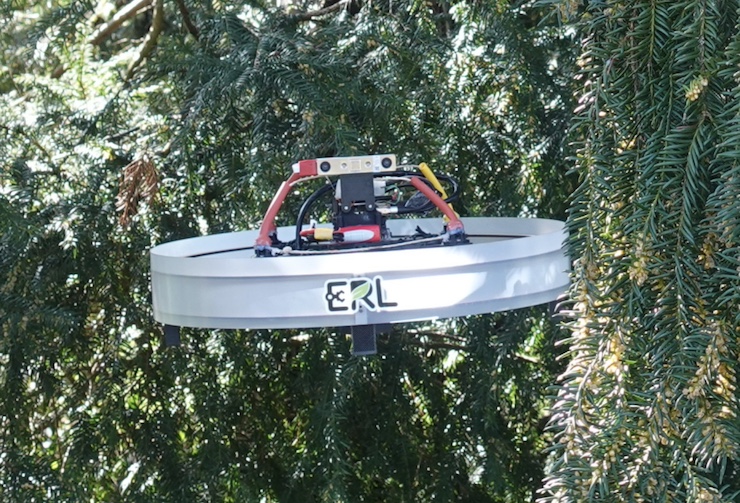
WSL.ch
Drone innovators have been known to look to the insect world for their design inspiration – bees and beetles are two favorite templates – especially when it comes to wing design. Now, a team of Swiss designers are turning to cockroaches for insights into how to design a drone that can better explore tree canopies.
Exploring tree canopies in depth – to test for sources of plant disease and infestations – has proven challenging to researchers and practitioners in the past. Jungle forests are often difficult to access due to their remote location and the presence of poisonous snakes and other human hazards. And the trees are tall and aren’t easily scaled by field surveyors.
Researchers at the Swiss Federal Institute for Forest, Snow and Landscape Research (WSL) in collaboration with researchers from ETH Zurich and the University of Pisa sought to find a solution to this problem – with a drone that can hover over tall trees and, using special sensors, conduct tests and gather data on their distressed leaves. However, an early version of their drone was unable to go deeper into the tree canopy to uncover the source and depth of the problem.
The latest version is a flat circular drone that mimics the low-friction body skin of cockroaches, allowing the aircraft to creep in between the leaves and crawl toward the tree crown, gathering additional data along the way.
Initial tests of the cockroach drone have been successful, the Swiss researchers say. The remotely-piloted vehicle was able to push away leaves and move past them. The researchers now plan to test the cockroach drone in the field. The result of their initial investigations can be found in the journal Nature Communications.
This is not the first time drone designers have turned to cockroaches. In fact, a team of researchers in Singapore is experimenting with the idea of turning live cockroaches into insect-computer “hybrids” that might assist first responders in search-and-rescue missions.
Much like the Swiss researchers, the Singapore team is finding that cockroaches have the ability to navigate tiny and dangerous gaps – for example, the gaps that exist in the rubble of collapsed buildings where survivors may lie wounded. And insect-like drones consume enormous power during flight and because of their size, rely on tiny batteries — as a result, their operating time is typically limited to a few minutes.
The researchers have a point: In the case of tree canopy operations, it’s possible to use a ground based power source to extend the drone’s longevity – or to recharge its batteries between data collections. But a single drone search-and-rescue operation may extend over a vast area and require prolonged flight time – and longer-lasting battery power.
The Singapore researchers aren’t using just any version of the insect. To boost operating time and flying skills, they’ve chosen the Madagascar hissing cockroach – one of the world’s largest cockroaches, reaching up to 3 inches in length – for their experiments. The Madagascar cockroach is large enough to be fitted with the miniature infra-red cameras and communications technology needed to support remote flight operations, they say.
The team estimates that about 500 roboticized cockroaches would be needed to scan a 5-square-kilometer area. While the system hasn’t yet been tested in real-life rescue missions, cockroach cyborgs were able to distinguish between humans and non-humans with 87% accuracy in experimental field tests.
“There is still a long way to go before artificial mini robots are really used for search and rescue missions in disaster-hit areas due to hindrance in power consumption, computation load of the locomotion, and obstacle-avoidance system,” the researchers note.



